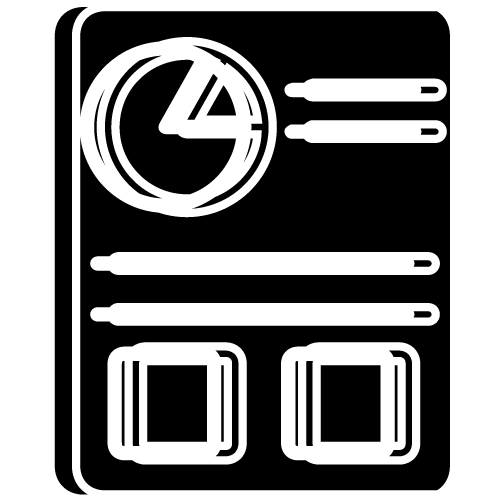Therapeutic effect and safety of ozone therapy in sars cov-2 patients. Cuban experience
DOI:
https://doi.org/10.7203/jo3t.6.7.2022.25980Keywords:
ozone therapy, COVID-19, immunomodulation, NF-?B, Nrf2, oxidative stress, reduced glutathione. Abstract
Abstract
SARS-Cov2, the virus causing COVID-19, is distributed globally since December 2019, classified as a pandemic by the World Health Organization. The virus is known to cause Acute Respiratory Distress Syndrome (ARDS). Cytokine storm is considered to be one of the major causes of ARDS and multiple-organ failure. Due to the high lethality of SARS-CoV2 infections and its economic and social impact, it is necessary to seek new therapeutic procedures. It has been demonstrated that ozone therapy produces a significant improvement in blood flow and oxygenation of ischemic tissues. Also, ozone can achieve an equilibrium between Nrf2 and NF-?B factors, modulating oxidative stress and the expression of pro-inflammatory cytokines. Levels of reduced glutathione (GSH), the key antioxidant guardian in all tissues, could be critical in extinguishing the exacerbated inflammation that triggers organ failure in COVID-19. The reduced levels of GSH are clinically associated with severe disease. It is well documented that ozone activates the level of GSH. In clinical studies, ozone has a significant role in the treatment of pulmonary and vascular diseases. An exploratory, controlled, open and monocentric study was carried out in 32 patients with mild to moderate symptoms, distributed at random in two groups of 16 patients each. The first group received rectal ozone therapy (ozone concentration between 25 and 40 mg/L and volume between 100 and 200 ml, twice per day) together with conventional treatment with Kaletra Lopinavir/Ritonavir), chloroquine and/or Heberferon®, and the second group only conventional treatment. The result of the RT-PCR and the evolution of the clinical signs were the primary efficacy variables. Secondary efficacy variables were ferritin, C-reactive protein, oxidative stress biomarkers, cellular indicators of inflammation, biochemical and hematological variables, and the presence of adverse effects. Patients (81%) who received rectal ozone therapy had a negative RT-PCR after the tenth ozone therapy application (after 5 days), with significant differences from the control group at the same time. In all patients, improvements in the levels of C-reactive protein and cellular indicators of inflammation were achieved at the end of the treatment. Ozone treatment significantly increases GSH levels compared to the control group, but not other REDOX markers. The treatments were safe and welltolerated.
Also, a pilot, open-label, phase IV clinical trial study was performed in 40 SARS-CoV-2 convalescent patients (with symptoms extending beyond three weeks since negative PCR test) distributed at random into 2 groups. One group was treated with BIOPLA (dietary complement based on a concentrated protein - mineral elaborated from human placental after born, 1 capsule of 400 mg during 30 days) and the ozone group treated with rectal ozone application (ozone concentration between 20 and 35 mg/L and volume between 150 and 200 ml, 20 sessions, one per day) + BIOPLA. Both groups were treated and followed for one month. Twenty individuals supposedly healthy were enrolled and evaluated as the control group.
Effect evaluation showed beneficial improvement in both treated groups resulting in 85% of patients for BIOPLA plus RIO3T and 37% for BIOPLA (p<0.05). Serum GSH levels in group BIOPLA/O3 at final extraction showed a significant increase in comparison with BIOPLA alone (p<0.05). Symptoms were reduced. No side effects were observed. These results corroborate that substantial oxidative stress and symptoms persist in COVID 19 postcondition ameliorating with rectal ozone and BIOPLA interventions. A third clinical study was performed in 97 persistent positive COVID-19 patients (9 or more days with a positive RT-PCR), using the same scheme of treatment that the exploratory, controlled clinical trial. The percentage of patients who had a negative RT-PCR within the first 10 ozone applications, twice per day (5 days) was 69.1 %. After 20 sessions of rectal ozone therapy (10 days), 100 % of patients achieved a negative RT-PCR. Today, ozone therapy represents the most practical approach for integrating standard therapies to achieve homeostasis. Therefore, due to the ozone therapeutical effects, as well as its safety, it can be proposed as an adjunct therapy in COVID-19 patients.
 Downloads
Downloads
Downloads
Published
How to Cite
-
Abstract385
-
PDF199
Issue
Section
License
Journal of Ozone Therapy applies the Creative Commons Attribution-NonCommercial 4.0 International License (CC BY NC 4.0) license to works we publish.
Under this license, authors retain ownership of the copyright for their content, but allow anyone to download, reuse, reprint, modify, distribute and/or copy the content as long as the original authors and source are cited. No permission is required from the authors or the publishers.
You may not use the material for commercial purposes.
Appropriate attribution can be provided by simply citing the original article, provide a link to the license, and indicate if changes were made.
You may do so in any reasonable manner, but not in any way that suggests the licensor endorses you or your use.




